Nate was here to pick out a Long Haul Trucker this weekend. He rides a mountain bike with hydraulic disc brakes, and so he was a little bit unsure about what type of brakes would work best on a touring bike. According to what he had heard and his experiences, disc brakes:
-are finicky and difficult to adjust
-are prone to failure
-have better stopping power and control than rim brakes
-interfere with the installation of fenders and/or racks
I imagine the same questions might come up when other people are considering the new Disc Trucker vs. the standard rim brake equipped Long Haul Trucker. (An earlier post discussed some different types of rim brake calipers.)
As a primer, there are two types of disc brakes: Hydraulic brakes and mechanical or “cable actuated” brakes. Actually there are 4 types: crummy hydraulic disc brakes, good hydraulic disc brakes, crummy mechanical disc brakes and good mechanical disc brakes. Good hydraulic disc brakes are not difficult to adjust, have incredible stopping power and are very smooth with great “modulation” or control. The downside is that if something does go wrong with the closed hydraulic system, the brakes will need a sometimes costly and time consuming repair. Good hydraulic dis brakes are also not inexpensive. Crummy hydraulic disc brakes may work ok for awhile but when there is a problem it might be better to replace them.

Disc brakes require mounts on the frame and fork and the wheels need to have hubs made to mount disc rotors.
Mechanical disc brakes are more user friendly. Partly because they are actuated by a cable, just like sidepull or cantilever brakes, and partly because the individual pistons, and hence the individual brake pads, are adjustable. On a crummy mechanical disc brake only one piston can be adjusted. But on a decent mechanical disc brake such as the Avid BB7 which comes stock on the Disc Trucker, both pistons/pads are adjustable making setup and maintenance adjustments relatively easy.
I don’t consider availability of replacement parts to be a factor when comparing the suitability of mechanical disc brakes vs. rim brakes for a touring bike. Spare cables are cheap and small (and the same cable works in either type of brake) as are pads. In fact, replacing pads and adjusting them with BB7 brakes may be easier than replacing and adjusting cantilever or v-brake pads. In some cases the disc rotor may need to be replaced but these too are light and cheap and don’t take up much room in the bike panniers.

Surly designed a special dropout for the Disc Trucker. The caliper nestles between the stays and is out of harm’s way and out of the way of rack and fender struts.
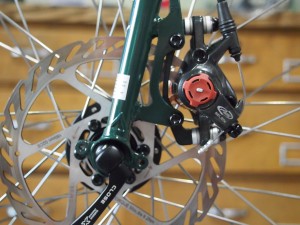
The front caliper on a Surly Disc Trucker requires a little bit of ingenuity when installing fenders. The good news is that fender stays bend quite easily!
More about disc brakes:
If a wheel spoke snaps, rim brakes will likely rub on the now out of true rim, whereas a disc brake will still work. Disc brakes may also maintain their stopping power better in wet conditions, but once the rotors and pads are contaminated with dirt and grease they may squeal. I appreciate the arguably cleaner look the bike has with disc brakes.
So, after all, Nate decided to get the Disc Trucker and is happy with the added stopping power. For those considering a Disc Trucker over a rim brake Long Haul Trucker, maintenance and service concerns should be low on the list.
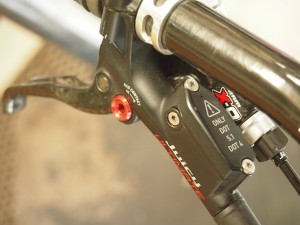
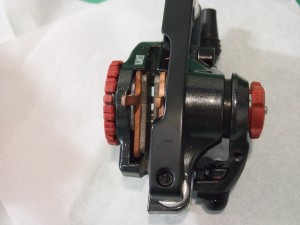

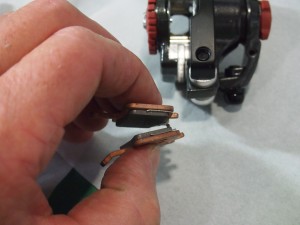
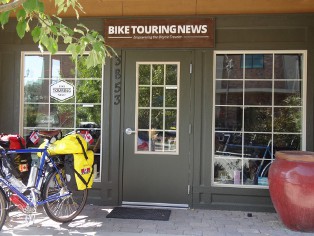
AAZ June 8, 2013, 7:18 pm
Thanks for the information. This is helpful when considering the two bikes.
Robert Wilson September 21, 2013, 10:32 am
Best bet would be to buy the LHT non-disc version and put a disk fork on it. Then you could have a cantilever rear and BB7 front….best of both worlds and if your disc brake gets ruined somehow, just pop the canti off the back and put it on the front!